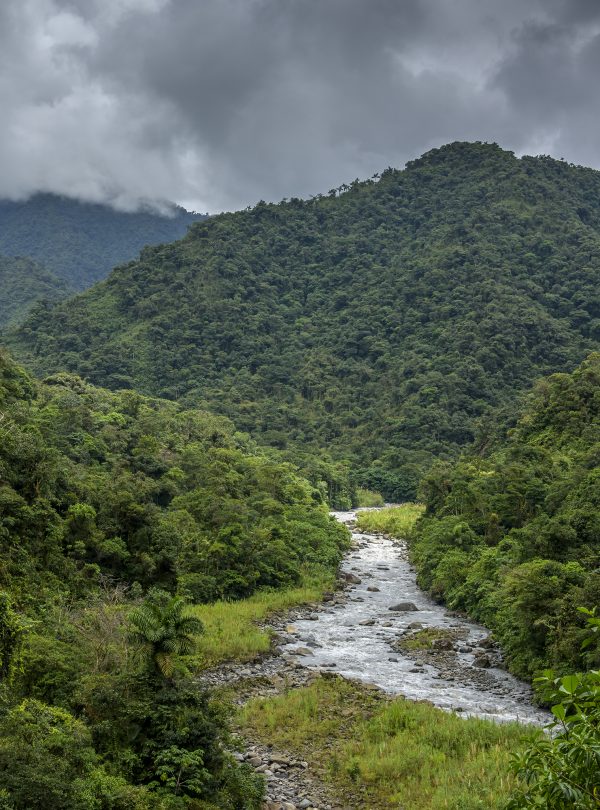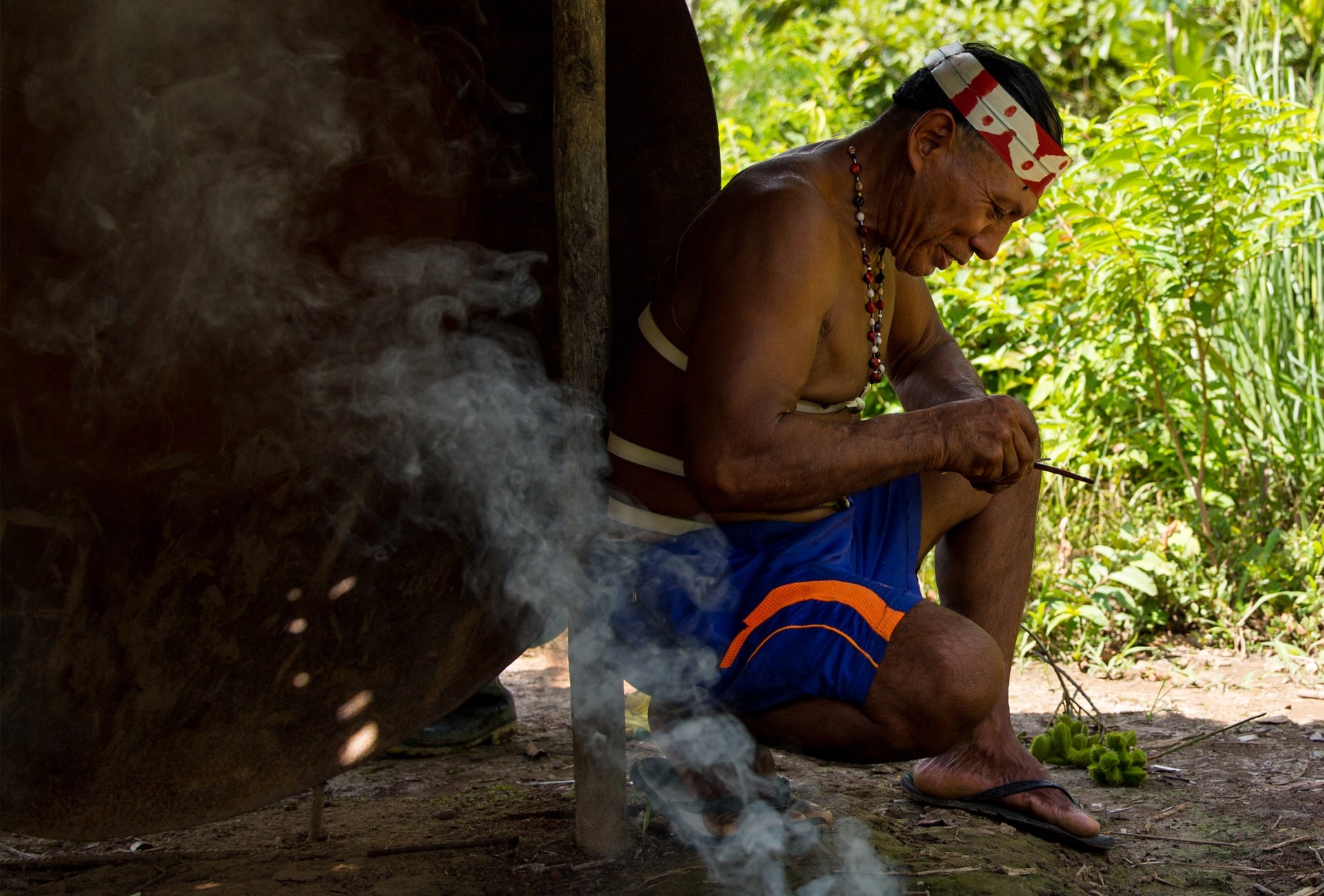
Final Push to Protect Indigenous Lands in the Peruvian Amazon
Support Other Projects Like ThisSupport Other Projects Like ThisAmazonia is the world’s largest tropical forest and spans nine countries in South America. After Brazil, Peru has the greatest extension of this biome which represents more than half of the surface of the country.
-
Species at Risk
Black-faced Black Spider Monkey (EN), Giant Otter (EN), White-bellied Spider Monkey (EN)
-
Carbon stored
1,135,860,000 mT*
*(metric tons of CO2 equivalents) -
Partner
CEDIA
-
6,102,946 Proposed Acres Conserved by
Designation
Please note that your donation may not be immediately reflected in the funding thermometer above.
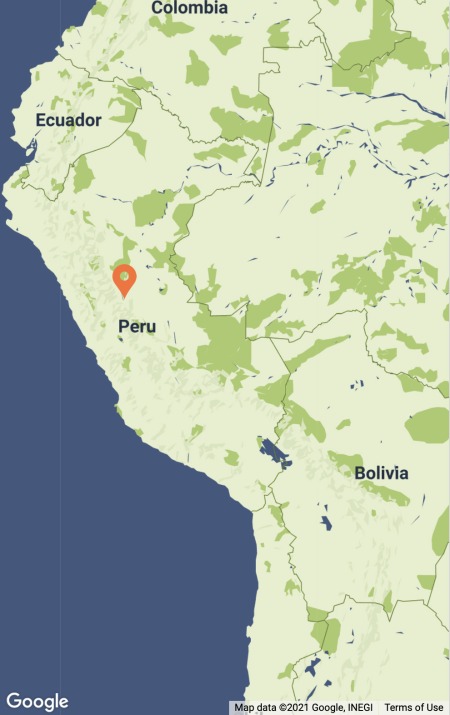
6,102,946
Amazonia is the world’s largest tropical forest and spans nine countries in South America. After Brazil, Peru has the greatest extension of this biome which represents more than half of the surface of the country.
-
Species at Risk
Black-faced Black Spider Monkey (EN), Giant Otter (EN), White-bellied Spider Monkey (EN)
-
Carbon stored
1,135,860,000 mT*
*(metric tons of CO2 equivalents) -
Partner
CEDIA
-
6,102,946 Proposed Acres Conserved by
Designation
Please note that your donation may not be immediately reflected in the funding thermometer above.

6,102,946
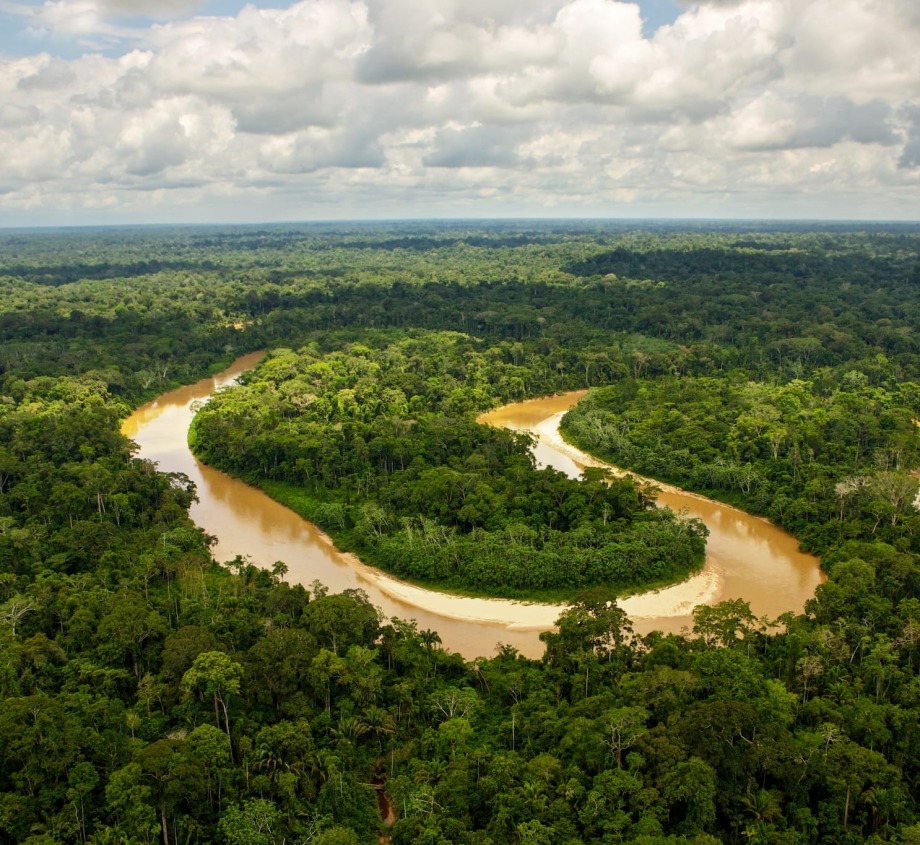
PROJECT UPDATE
Working with our partner, Centro para el Desarrollo del Indígena Amazónico (CEDIA), 203 Indigenous communities have received titles for land totaling 4,214,797 acres. Rainforest Trust and our local partner continue to work to safeguard the remaining acres.
Amazonia is the world’s largest tropical forest and spans nine countries in South America. After Brazil, Peru has the greatest extension of this biome which represents more than half of the surface of the country.
The Loreto and Ucayali Regions are the two largest Amazon regions in Peru and are traditionally occupied and protected by indigenous groups. Unfortunately, hundreds of indigenous communities have no recognized ownership rights and their lands are under tremendous pressure from logging, agro-industries and colonists. Without the titles to their territories, native communities have no legal instrument to defend these lands from activities like logging and agricultural expansion.
Rainforest Trust and local partner Center for the Development of an Indigenous Amazon (CEDIA) seek $4,583,920 to title 220 communities covering more than six million acres in order to legally protect indigenous lands. It is crucial to close the unprotected gaps between indigenous territories to prevent colonists and industries from negatively affecting the integrity of the ecosystems. In addition to granting communities the rights to their land, this will provide protection for Endangered species such as the White-bellied Spider Monkey, Giant Otter and Black-faced Black Spider Monkey.
Watch the recording of Rainforest Trust’s Field Journal: Peru—Saving the Peruvian Amazon with Indigenous Communities
Did you know?
Communities live within these 6 million acres.
Explore the Peruvian Amazon
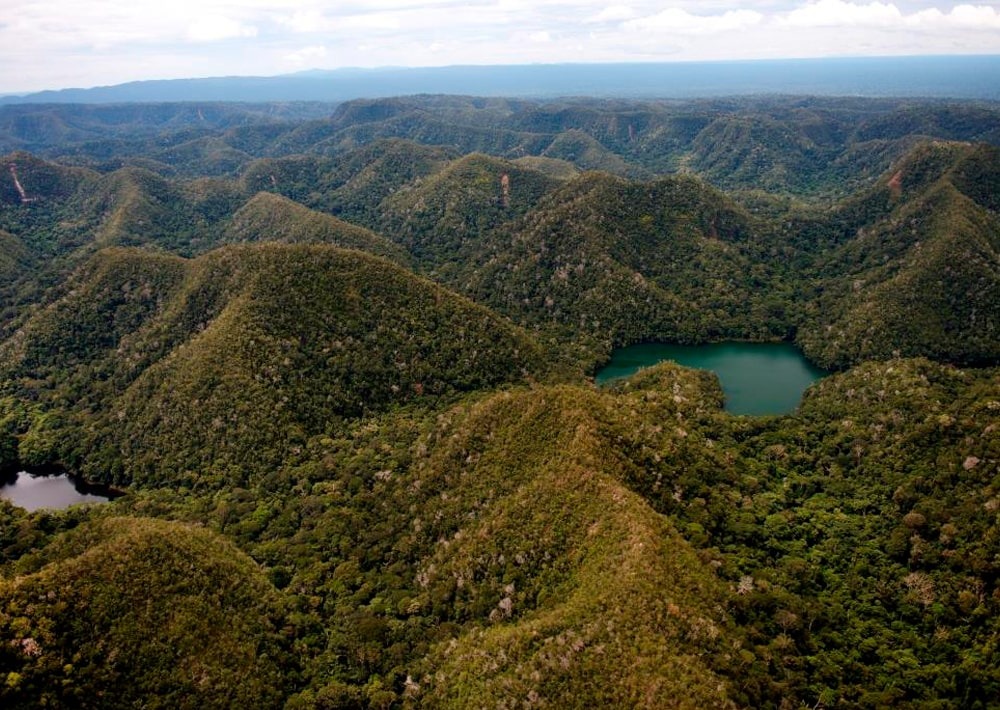
Lakes in Sierra del Divisor, by CEDIA
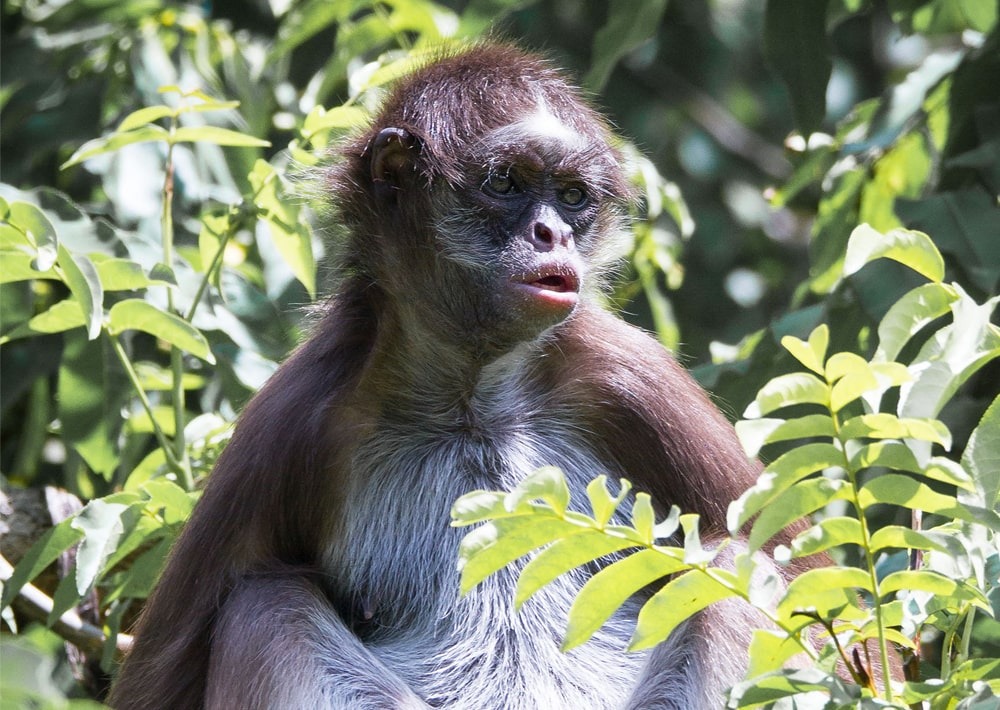
The White-bellied Spider Monkey, by Blacktigersdream/Flickr
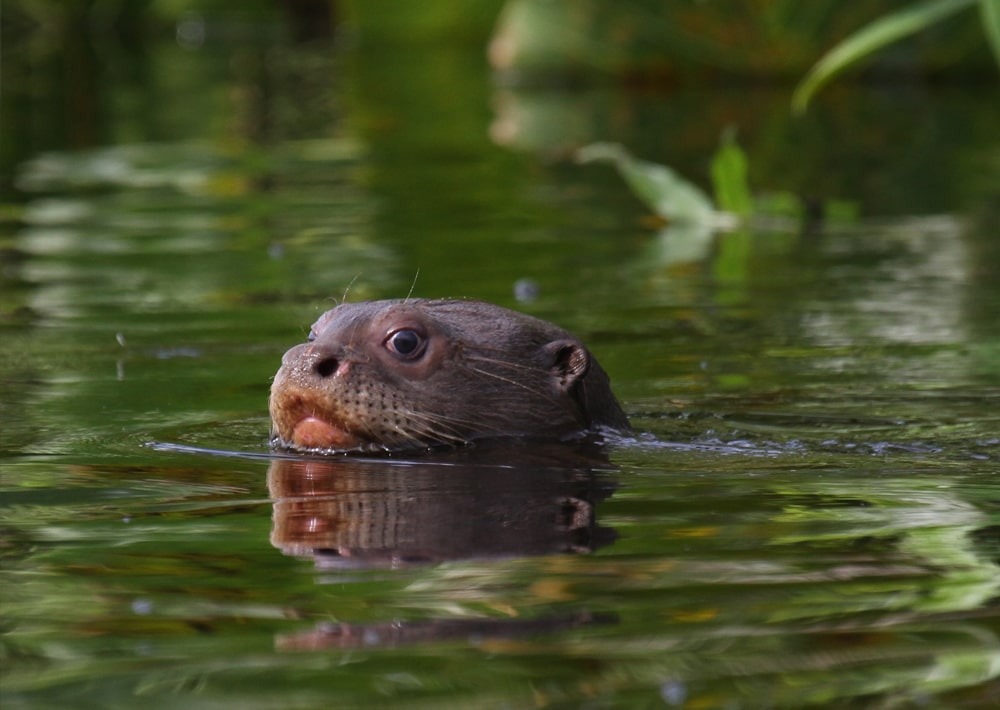
The Giant Otter, by Kenny Ross
The Amazonia is most biodiverse biome in the planet, with diversity hotspots occurring in the western part of the Amazon basin (also known as Andes-Amazonia).
Through this ambitious conservation initiative, protection will span five different and threatened ecoregions: Ucayali moist forests, Napo moist forests, Southwest Amazon moist forests, Iquitos Varzea and Solimoes Japurá moist forests. The project site is located in the southern part of Loreto and throughout the Ucayali Region all the way to the foothills of the Andes. Many threatened species are dependent on the project site, including primates such as the Endangered White-bellied Spider Monkey and Black-faced Black Spider Monkey, large mammals such as the Endangered Giant Otter and Vulnerable Lowland Tapir, and reptiles such as the Vulnerable Yellow-footed Tortoise and Yellow-spotted River Turtle. Roughly 600 bird species, 140 amphibian species and more than 60 large mammal species are dependent on the Amazon landscape. There are thousands of plant species in this region; inventories in the Matsés National Reserve and the Sierra del Divisor National Park estimate between 3,000-4,000 plant species. In the area located between the Ucayali and Tapiche rivers, there is a large wetland that includes a number of different ecosystems such as white sand forests, peat deposits, savannas and some islands of upland forests.
The lack of recognized indigenous land titles promotes the idea that these are empty areas that are available for exploitation, which generates conflicts among the indigenous groups trying to defend their territories and the colonists wanting to develop exploitative activities.
The major threats to these areas are logging, mining, oil and gas extraction and colonization for agriculture. These activities are closely related to the lack of land property legalization or usage rights in areas occupied by indigenous groups. Land titles will give the rights for legal management of the territories and resources to communities, and also the responsibility for their care in accordance to the law.
The cornerstone of Rainforest Trust’s work in the Amazon is empowering local communities. We have partnered with CEDIA for over 25 years to do so, and we have helped title numerous lands and supported the declaration of strategic protected areas.
To continue this endeavour, we aim to secure legally recognized land titles for 220 communities from dozens of indigenous tribes. This will ensure that they become the rightful owners of their territories and legal guardians of the natural resources. As part of this, we will help develop “life plans” — legally recognized instruments — for communities, which consist of self-diagnoses divided into seven dimensions of community life (such as culture, economic resources and natural resource use), sustainable activities and a monitoring plan to ensure lasting protection.
Rainforest Trust and local partner seek $4,583,920 to title 220 communities covering more than six million acres in order to legally protect indigenous lands.
It is urgent to initiate the property legalization actions for native communities and prevent the selling mining and timber concessions to companies wanting to exploit these lands. Titling these lands to indigenous communities will provide them the right for sustainable natural resource administration, as well as grant them the legal responsibility to safeguard it against illegal activities. Through agreements with regional authorities, our partner will conduct a comprehensive survey to identify the native communities that still lack land titles. Rainforest Trust will then support all of the mandated legal and technical procedures required to ensure that indigenous lands can be titled and recognized. Once titled, we will ensure that communities are empowered to be stewards of their land through the implementation of management plans that regulate land use and allocate communal land sections for strict protection. Supporting indigenous communities in the management of their natural resources not only leads to long-term habitat protection, but ensures that they do not have to relocate due to the pressures of colonization.
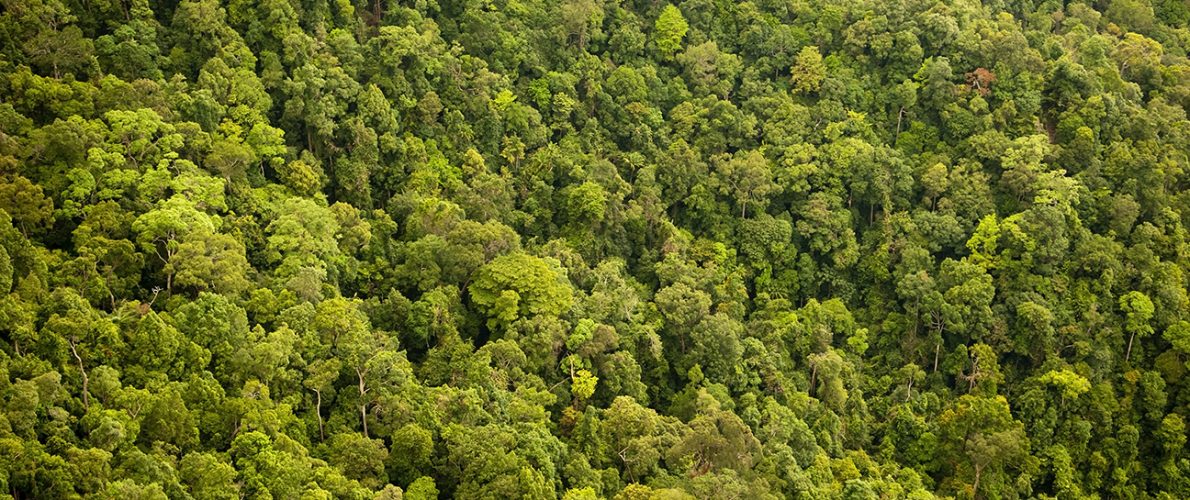
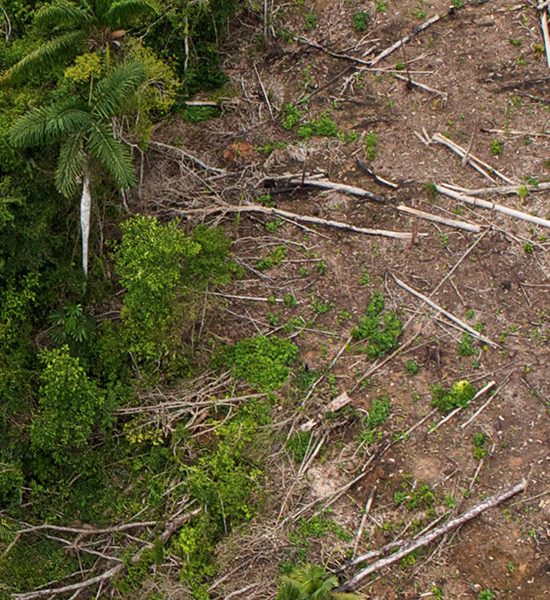
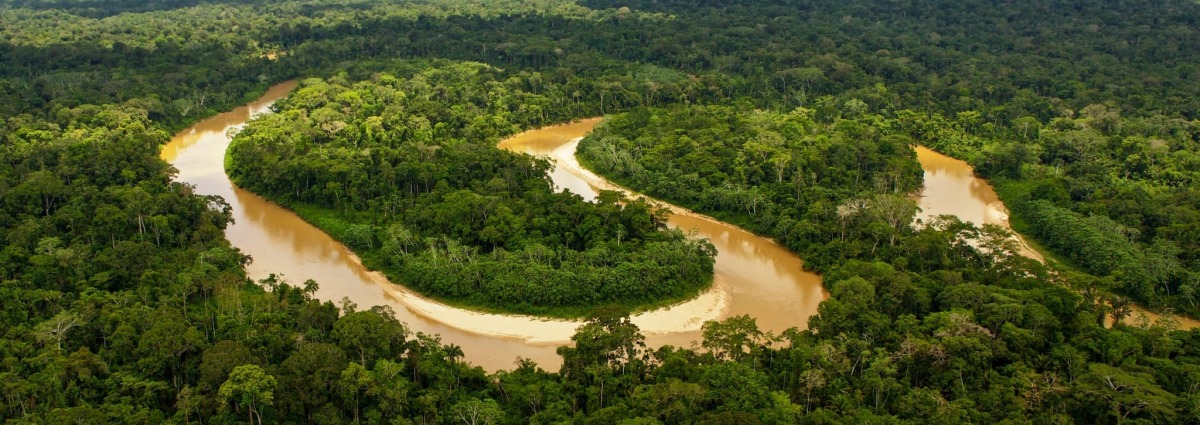
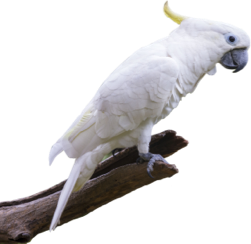
Partnering to Save Rainforest
Our partners’ ability to work with their governments and build strong connections with local communities ensures the successful implementation of our projects.
Learn More About This PartnerLearn More About This Partner
Sign up to receive the latest updates
"*" indicates required fields

